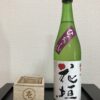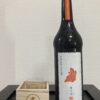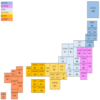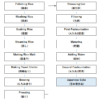Kijo-Shu
“Kijo-Shu” is like botrytised wine. It is brewed with special method. The characteristic is sweet and it has the thicken texture. It is usual that Japanese Sake is brewed with only rice and water. The ratio; rice 100 vs water 130. This is why people say that water is the heart of Japanese Sake. However, “Kijo-Shu” is brewed with Japanese Sake instead of water. The ratio; rice 100 vs water 70, Japanese Sake 60.
The water that is used for Japanese Sake is different from tap water. It is usually spring water. Much more water than people imagine is used to brew Japanese Sake. Not only add to Japanese Sake, but also breweries use water to wash tools. They only use the water that they take from same source. This is because the water hardness has big effects on the tastes of Japanese Sake. It is known that the water hardness affects the activity of bacteria and yeast. If they use hard water, the activity is enhanced. As a result, the taste will be strong. Japanese Sake in Nada, HYOGO Prefecture, is known as the representative of this types of Japanese Sake. If they used soft water, the taste will be clear and crisp. Japanese Sake in KYOYO is famous as the representative. The Japanese Sake of TOHOKU Area and HIROSHIMA is also known as the representative recently.
Because they use Japanese Sake instead of water, “Kijo-Shu” is usually more expensive than ordinary Japanese Sake. And, as it is sweet and it has the thicken texture, it is usually to enjoy as aperitif or after dinner drink. It is also said that it is suit for the mature and aging as Japanese Sake.
“Kijo-Shu” is said it is brewed with the close method that was written in the Heian Era article. The article is thought that was written in 927. National Research Institute of Brewing invented this method. The brewing method patent has already expired. But, a brewery has a patent of the name for “Kijo-Shu”. So, only who joins the association of “Kijo-Shu” can use the name now.




